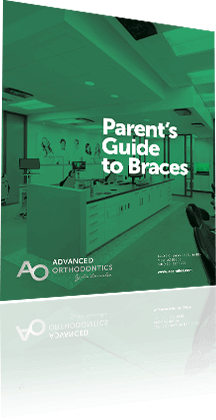When your upper front teeth are relatively forward of your bottom teeth, and the peaks and valleys of both your upper and lower teeth meet comfortably, you have an ideal bite.
Unfortunately, having an ideal bite is not the case for most; instead, many people suffer from teeth alignment problems, clinically referred to as malocclusions.
While a misaligned bite is typical, some cases can have more than cosmetic or aesthetic outcomes. If left untreated, common teeth alignment problems could eventually lead to the following:
- Bruxism or teeth grinding
- Premature or uneven wearing of teeth
- Soft tissue damage when biting cheeks often
- Weakening of teeth, making them prone to decay or breaking
- Temporomandibular joint (TMJ) problems, presenting jaw tenderness, earaches, headaches, and overall facial pain
In severe malocclusion cases, patients can experience difficulties performing vital oral functions like talking, chewing, and breathing.
In this blog, we will guide you through the different types of teeth alignment problems and procedures.
Different Types of Teeth Alignment Problems
Natural conditions or habits can cause malocclusions, including tooth loss, thumb sucking, injuries, prolonged bottle feeding, impacted teeth, or lack of oral care.
Three classes of malocclusions:
Class 1 Malocclusion
A class 1 malocclusion is primarily minor and may be caused by thumb sucking or prolonged bottle use during childhood. In this type, the upper and lower teeth overlap one another.
The class 1 malocclusion has three types:
- Type 1 – The upper and lower teeth lean towards the tongue.
- Type 2 – The lower teeth lean toward the tongue while the upper teeth stick outwards.
- Type 3 – The upper, crowded teeth lean towards the tongue.
Orthodontists may treat all types of malocclusion with minor treatment, likely taking lesser time than classes 2 and 3.
Class 2 Malocclusion
In class 2 malocclusion, the upper teeth significantly stick out over the lower ones. This type can affect the bite and requires early intervention.
Compared to class 1, this type may take more time before the teeth misalignment is corrected.
The class 2 malocclusion has two divisions:
- The upper teeth tilt toward the lips.
- The upper, central incisors tilt toward the tongue.
Class 3 Malocclusion
A class 3 malocclusion is a class of underbite; it is where the lower teeth protrude or stick out over the upper teeth. However, it is considered a crossbite when only several upper and lower teeth overlap.
The class 3 malocclusion has three types:
- Type 1 – The upper and lower teeth form an irregular arch shape.
- Type 2 – The lower front teeth lean toward the tongue.
- Type 3 – The upper teeth lean toward the tongue with an abnormal arch shape.
Malocclusions often present themselves as the following:
- Spacing – The excessive space between several teeth.
- Diastema – A spacing problem where there is space between two adjacent teeth, commonly the front teeth.
- Overcrowding – A common condition caused by a lack of space between several teeth, resulting in crowded, crooked teeth.
- Overjet – The upper front teeth lean over the lower front teeth horizontally.
- Open Bite – The lower front teeth excessively bite into the roof of the mouth.
- Crossbite – The abnormal biting of one or several groups of teeth, this misalignment can affect upper and lower teeth.
- Underbite – Also referred to as an anterior crossbite, the lower front teeth are arranged more forward than the upper front teeth.
- Impacted tooth – The tooth cannot naturally erupt out of the gum, needing extraction or exposure, commonly followed by brace-fitting.
- Missing tooth – Also referred to as hypodontia, this results from improper teeth development or trauma.
While some of these can be treated with minor procedures, early dental intervention is the best approach to malocclusions.
Different Types of Teeth Alignment Procedures
Once a dentist examines and confirms a patient’s teeth alignment problems, they will be referred to an orthodontist for treatment.
Braces
Braces are considered the standard treatment for common teeth alignment problems.
Headgear Braces
In cases of severe misalignment that regular braces cannot manage, orthodontists may recommend headgear braces.
Invisalign
An even more popular alternative to braces today is Invisalign. While it is virtually “invisible” and recommended for milder cases, it could prove effective in treating malocclusions.
Cosmetic Dentistry
A common approach to mild misalignment is cosmetic dentistry, where dentists make imperfections less noticeable with minor reshaping procedures. In most cases, patients opt for veneers.
Some malocclusions may come with jaw problems or misalignments. In such cases, the following treatments may be suggested by an orthodontist:
- Reverse Pull Face Mask. For some cases of underbite, orthodontists may use a reverse pull face mask. A metal brace attached to the face mask is fixed to the upper back teeth, looking similar to a headgear brace surrounding the head.
- Upper Jaw Expander. Another treatment for some cases of underbite, an upper jaw expander widens the upper jaw to correct the misalignment, as the name suggests. Patients undergoing this treatment use a special key to adjust the wireframe fixed across their upper palate every night.
- Jaw Surgery. In extreme cases of jaw misalignment, patients who have difficulties performing essential oral functions may undergo orthognathic jaw surgery.
If you are looking to receive malocclusions treatment, explore your options with Advanced Orthodontics, from metal braces to Invisalign.
Advanced Orthodontics offers free consultations and flexible payment plans—talk to our team here.




Teeth alignment problems are very common, and various factors can cause them. One of the most common issues is overcrowding, which occurs when there needs to be more room in the mouth for all teeth. These problems can be treated with orthodontic treatments such as braces or aligners. For mild cases, lifestyle changes such as wearing a retainer or using a night guard may be enough to correct the alignment of the teeth. Whatever the case, it’s important to consult an orthodontist to determine the best action.